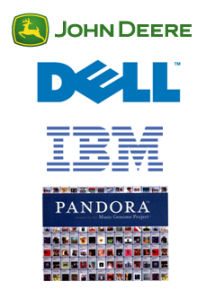Archive
All’s Well That Ends Well – Mr.William managed it well ! ! !
“All’s Well That Ends Well” by William Shakespeare meant that – a risky enterprise is justified so long as it turns out well in the end. How true…. isn’t it?
Looking at our current industries how many industries would ever wait till the end of the program to find out if the program was executed well? It’s all about money these days.
According to Dassault Systemes classification of industry segments, ENOVIA Program Management solutions also has something to offer for Automotive, Aersopace, Hightech, CPG, Consumer Goods, Energy, Industrial Equipment, Shipbuilding et all.
It’s the versatility of the ENOVIA Program Management solutions that it can be used by various industry verticals for various program management reasons. Let’s have a look as to how some of the program management solutions are tailor made for certain industries.
The automotive industry can use Program Management for the following
- APQP
- WBS (Work breakdown structure) management
- Project hierarchy decomposition
- Make/buy board
- Risk management
- Program planning
- Program sourcing
- Resource management
- Program financials
- Project template management
- Project content management
The aerospace industry can use Program management for the following
- Partner management
- Contracts management
- Program requirement management
- Configuration management
- Program execution
- Program resource management
The consumer goods industry can use program management for the following
- Project planning and scheduling
- Resources allocation and management
- Financial analysis
- Risk management
- Issue management
- Project knowledge capitalization
- Project tracking and monitoring
- Project deliverable tracking
The consumer packaged goods industry can use program management for the following
- Project template management
- Project content management
- Project work breakdown structure
- Project resource management
- Project planning and scheduling
- Project deliverable tracking
- Project dashboard
- NPI Stage-Gate
- Business/ROI analysis
The high-tech industry can use program management for the following
- Project planning and scheduling
- Resources allocation and management
- Financial analysis
- Risk management
- Project knowledge capitalization
- Project deliverable tracking
- Critical to Quality (CTQ)
The energy industry can use program management for the following
- E-RFx and bidding management
- Project template management
- Project content management
- Project work breakdown structure
- Project resource management
- Project planning and scheduling
- Project dashboard
- Business/ROI analysis
The industrial equipment industry can use program management for the following
- Project planning and scheduling
- Project issues/risk management
- Project work breakdown structure
- Project resource management
- Project dashboard
- Contract deliverables management
- Suppliers/partners management
The shipbuilding industry can use program management for the following
- Project template management
- Project content management
- Project work breakdown structure
- Project resource management
- Project planning and scheduling
- Business/ROI analysis
The life sciences industry can use program management for the following
- Project portfolio management
- Project planning & scheduling
- Project task execution
- Project assessment
Is there any other industry which would require program management?
Best Regards, Ajit
Customer Centric Online Order Fulfillment In The Virtual World Is A Reality
Customer centric Online Order fulfillment in the virtual world is a reality. The number of customizable products sold on e-commerce websites and through automated systems has grown in recent years. There has been a growing need for modern industries to involve directly the customers in order fulfillment processes. Most industries till date use sales channels to listen and understand the customer concerns and then fulfill the orders within the committed period of time.
Off late, the ability to let the customers directly configure their needs has proved to reduce the lead time taken to fulfill the order and the cost involved. Having the customers choose their product variations comes with some uncertainties if the system is governed by a mediocre rule management module or a very generic configuration system with an average user interface. Let’s take a simple example where the customer customizes to order a mobile phone with camera and the online order management module bills him for a mobile phone without the camera. The constant evolution of the product or the introduction of new variants periodically offers a challenge for the automated system to live up to the customers’ expectations. A rich user interface together with a lifelike experience is the need of the hour for any online configurator to thrive in the competition.
According to MIT’s Smart Customization group Mass Customization aims to provide goods and services that best serve individual customers’ personal needs with near mass production efficiency. Mass customization refers to a customer co-design process of products and services which meet the needs of each individual customer with regard to certain product features. The
term was coined in 1987 by Stan Davis. Joe Pine made the concept popular and published the first dedicated book on it, Mass Customization: The New Frontier in Business Competition (1993).
Pandora.com relieves people of having to channel-surf through radio stations to find the music they like. Customers submit an initial set of their preferred songs, and from that information the company identifies a broader set of music that fits their preference profile and then broadcasts those songs as a custom radio channel. As of December 2008, Pandora.com had more than 21 million listeners who had created 361 million custom radio stations that play 61 million songs from 60,000 artists every day.
Customers of Bayerische Motoren Werke (BMW) AG can use an online tool kit to design the roof of a Mini Cooper with their very own graphics or picture, which is then reproduced with an advanced digital printing system on a special foil. The tool kit has enabled BMW to tap into the custom after-sales market, which was previously owned by niche companies. In addition, Mini Cooper customers can also choose from among hundreds of options for many of the car’s components, as BMW is able to manufacture all cars on demand according to each buyer’s individual order.
My Virtual Model Inc., based in Montreal, is changing the very nature of the buying experience. The software enables consumers to build virtual models, or “avatars,” of themselves that allow them to evaluate (by virtually trying on or using) products from retailers like adidas, Best Buy,Levi’s and Sears. More than 10 million users have already signed up for the service, and the early results are impressive: Land’s End Inc. reports an increase in average order value of 15% and a jump in conversion rate of 45%.
Dassault Systemes ENOVIA V6 Variant Configuration Central provides a competitive configuration advantage to the Engineer-To-Order, Build-To-Order and Configure-To-Order world by optimizing the design of products and their variations. It is a best-in-class system configure-n-engineer solution available in the market that provides a reliable platform for constantly evolving product. It helps in optimizing the design process of highly variant product by allowing design engineers to quickly create an Engineering Bill-Of-Material from a custom order or custom configuration. Basically builds up a connection between product marketing, system engineering and design engineering and thereby improves part reuse by minimizing feature proliferation and thereby reducing product diversity.

